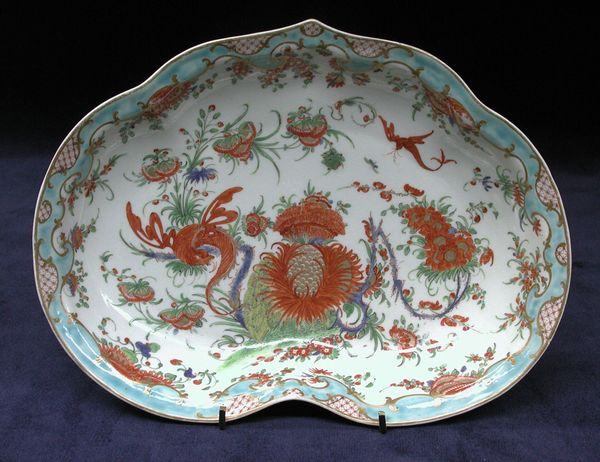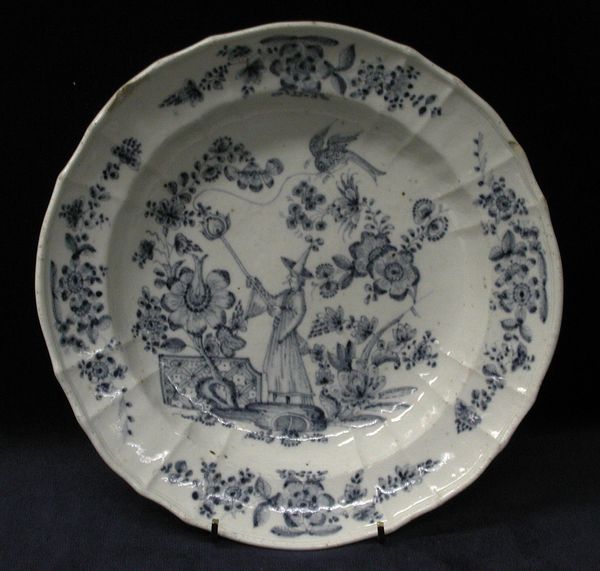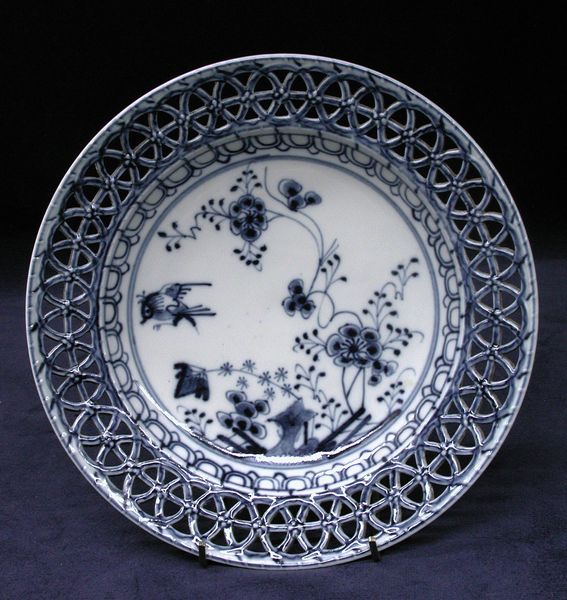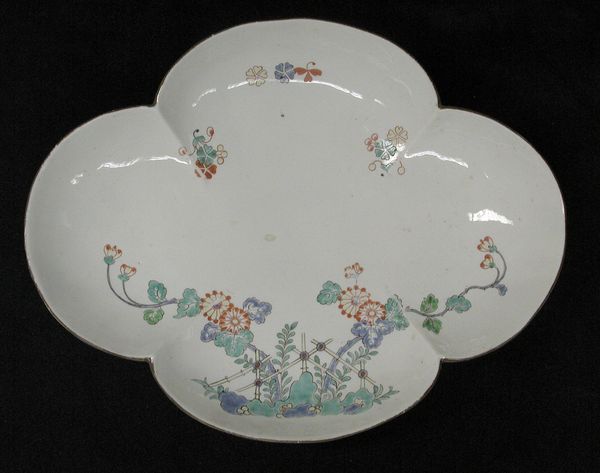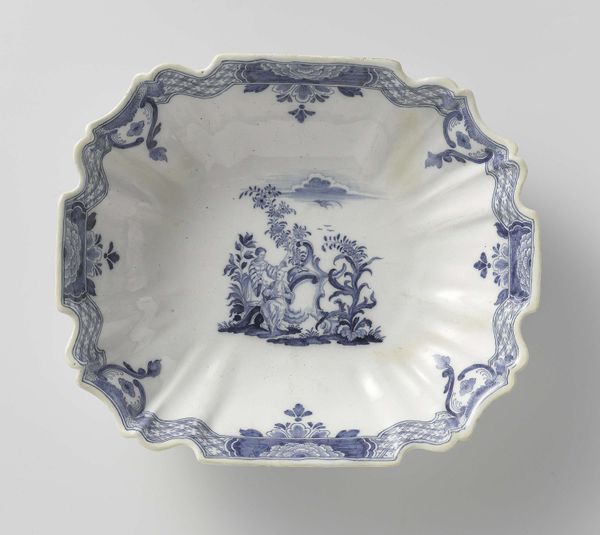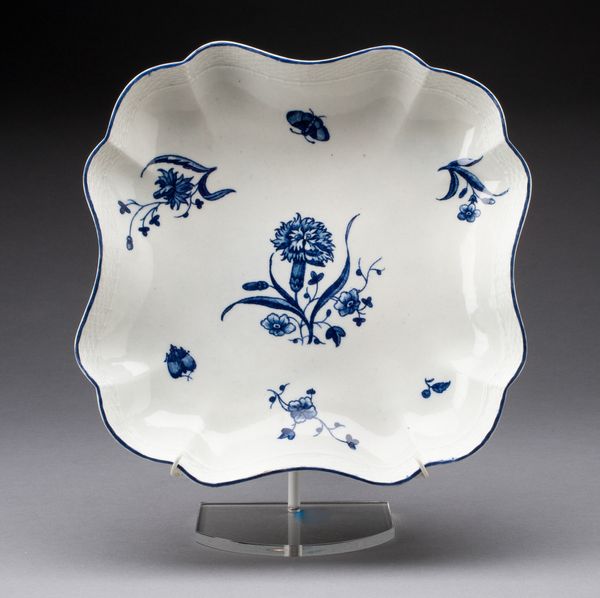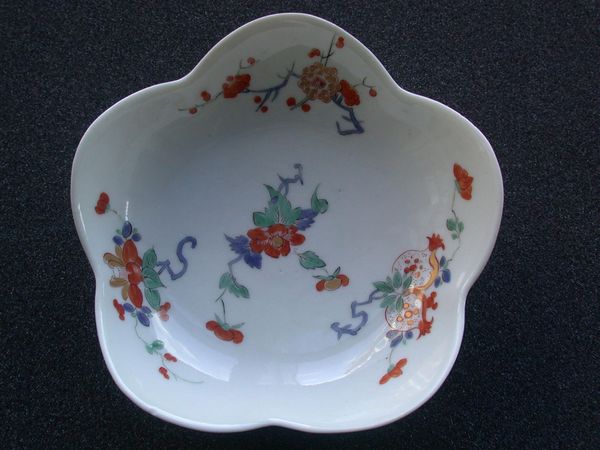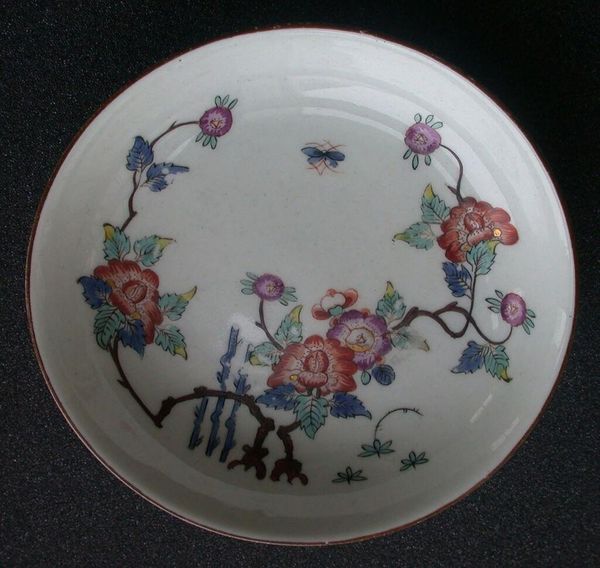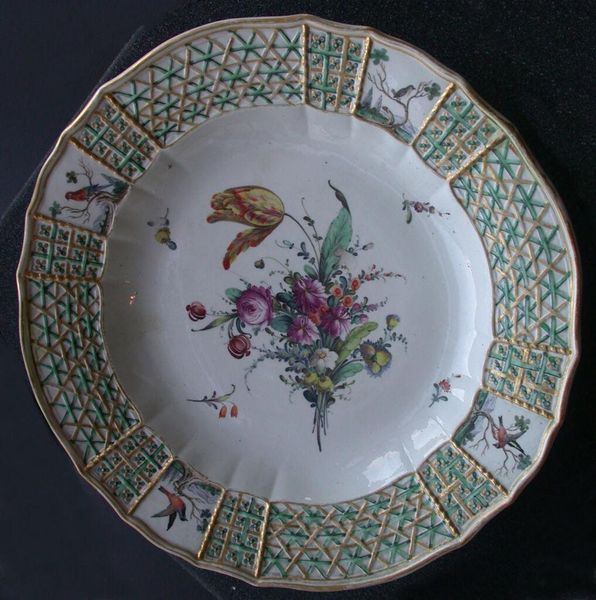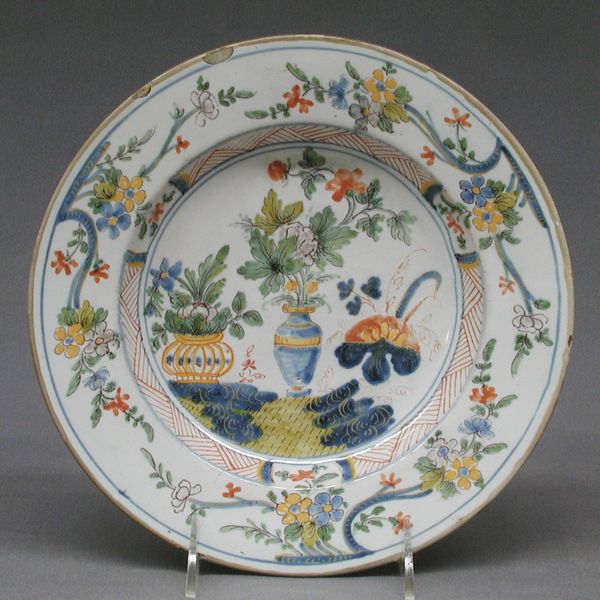
Dimensions: 9 3/4 × 9 3/4 in. (24.8 × 24.8 cm)
Copyright: Public Domain
Curator: Here we have a square dish crafted between 1775 and 1785 by the Ansbach Pottery and Porcelain Manufactory. It's rendered in porcelain, a popular medium for decorative arts during that period. What's your immediate take on it? Editor: It strikes me as serene, almost dreamlike. The blue on white porcelain always feels delicate, but there's a simple elegance to the arrangement of the bird and flora. It gives off the aura of refined, peaceful life, yet it has that crisp formal touch typical for its Rococo design. Curator: Indeed. The Rococo style, even on a seemingly simple piece like this, speaks to the prevailing social aesthetics. Notice the placement of the images and floral designs; their composition across the surface makes the dish visually engaging while simultaneously adhering to certain principles of balance typical for porcelain wares used by aristocratic members of society during formal dinners. Editor: Absolutely. The bird, centrally located but not dominating, symbolizes freedom or perhaps a gentle spirit. Blue and white are perennially linked to purity. And observe the flora, perhaps referencing growth or bounty. Does Ansbach pottery feature any regional or local flowers to add significance to their pieces? Curator: That's an astute question. Ansbach pieces are usually of a quality, where the pottery had its cultural patrons in aristocratic courts that wanted high-quality decorations for their mansions. The designs usually referenced larger visual ideas of the court at the time, as opposed to hyperlocal references for design choices. Its design elements likely tied into larger trade relations as well as social associations attached to flora or birds during this time period, though without clear documentations this is just a guess. Editor: It would be fascinating to delve further into that, seeing how far cultural symbols permeated court tastes! Either way, as we circle back to those Rococo motifs—that symmetry and lightness give such a rich sense of harmony here, almost like the plate holds an intangible echo of those eras it once reflected! Curator: Indeed. And to understand it today, is in turn, understanding what role these works have played since in private and public collections throughout its historical memory. These aesthetic qualities gave power to these objects. They made it worthy enough to be collected across two centuries, making their designs immortal as objects worth gazing over in collections of our own. Editor: Beautifully said. It serves as a reminder that every artifact whispers its story to those who listen and look carefully enough.
Comments
No comments
Be the first to comment and join the conversation on the ultimate creative platform.
